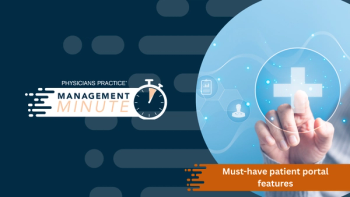
Patient engagement will be a hot topic at HIMSS20
Note: HIMSS20 has been canceled, virtual sessions are in planning.
Editor's Note:
A decade ago, electronic health records (EHRs) were still in their infancy, and industry observers were buzzing over the technology’s transformative potential.
In the leadup to the 2010
Close to
Interestingly enough, the same is true today.
Trending:
Nearly Every Provider Has an EHR… Now What?
Just as EHRs transformed the healthcare industry over the last decade, patient engagement platforms stand poised to transform the industry yet again. While 80% of office-based physicians and
Unfortunately, many providers are not sure where to start when it comes to patient engagement or how to build on the techniques they already have in place. No wonder online
For years, most relied on basic patient portals for direct communication with consumers. Some adopted additional health IT solutions to serve more specialized, patient-centric goals like remote monitoring. Others adopted tools such as online scheduling to improve the overall patient experience even as
Similar to how EHRs changed to fit the needs of providers-for example, by incorporating user-friendly design principles or the latest technologies-patient engagement platforms have grown increasingly sophisticated. The best patient engagement platforms combine communications into a centralized inbox so that the entire care team can clearly track communications. Imagine a workplace where doctors, nurses, and staff can quickly convey status updates across offices, electronically share patient records, video consult with other providers or securely text message with patients-all from one system, with one platform login or even securely accessed from a mobile device. It’s a coordinated, collaborative, cohesive experience for providers and staff. That’s the kind of efficiency that leads to more effective patient care.
Read More:
Why Consumerism Makes Patient Engagement More Vital Than Ever
While new technology is certainly driving interest in patient engagement, so too is the trend of healthcare consumerism. As patients pick up a greater share of the costs, they
Fortunately, the industry is starting to realize that healthcare is a business. To stay competitive and retain patients, it needs to adopt business techniques that match changing patient expectations.
For these consumers, it’s not enough to simply offer a patient portal and consider the box for “patient engagement” checked off. No,
In the age of value-based care, where providers are paid based on outcomes and not services rendered, this trend toward consumerism offers an opportunity. If providers offer patients the tools to fit their preferred and personalized communication needs, they are likely to remain engaged and stay healthy. And hospital CIOs are taking note. A 2018 roundtable hosted by Impact Advisors and the Scottsdale Institute
You can expect these health IT leaders to spend a good bit of their time at HIMSS 2020 in the brand new
Newsletter
Optimize your practice with the Physicians Practice newsletter, offering management pearls, leadership tips, and business strategies tailored for practice administrators and physicians of any specialty.




